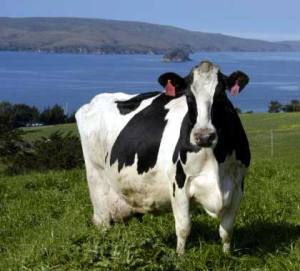Straus Family Creamery, on the shores of Tomales Bay, about an hour north of San Francisco, became the first organic dairy west of the Mississippi when it converted, in 1993, from a small family dairy farm to the sustainable model it is today. Straus produces extraordinarily good milk and cream in old-fashioned reusable bottles, along with European-style butters, tangy yogurts, and top-notch ice creams. But—get this—not only do those Straus cows make great dairy products, they also make electricity.

Each cow creates 100 to 120 pounds of waste a day (that's 40,000 pounds a year per cow, folks). That waste gets separated into solids, which go into compost for naturally fertilizing the fields, and liquids. The liquids go into ponds topped with floating plastic covers. There, bacteria digest the liquid manure and give off methane. The gas is captured and sent flowing through pipes into a combustion engine. There it is used as fuel, which, in turn, runs a generator that converts the gas into electricity. This process produces up to 600,000 kilowatts per year, saving some $6,000 a month in energy costs. Considering that 3 percent of all greenhouse-gas emissions come from agricultural sources (like animal waste), think of the possibilities if more dairies used this model.



 Pinterest
Pinterest


